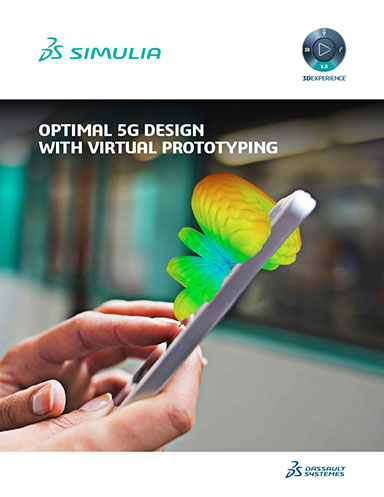
November 7, 2019
Current mobile data technology is being pushed to its limit. The increase in bandwidth-heavy apps for streaming, the need for high-speed internet in territories where infrastructure is limited and the development of smart and autonomous vehicles are all increasing demand for high-speed and reliable data.
Additional industry tends such as the rise of cloud computing, the introduction of the Internet of Things (IoT), remote tele-surgery and precision manufacturing all require a completely new approach for cellular networks. The Fifth Generation New Radio, commonly known as 5G NR, promises download speeds of gigabits per second, with much lower latency, higher reliability and support for far more connected devices in a given area.
Original equipment manufacturers (OEMs) and suppliers must develop 5G capable devices and networks to remain competitive, but there is a significant increase in complexity compared to previous generations. For example, 5G has two major operating frequency bands, the sub 6 GHz spectrum and 24-52 GHz in the millimeter wave (mm-wave) spectrum.
5G standards include support for massive MIMO (Multiple Input Multiple Output) communication, and antenna arrays with beamforming technology, to increase network capacity and communication quality even in dense urban environments with many users. Of course support for previous generation telecommunications standards must be maintained. For the fixed form factors of the smartphone market, this will typically require a complete redesign to accommodate the new technology while maintaining current capabilities.
5G devices require redesign of components, circuits, antennas and even materials used, to ensure effective performance, regulatory compliance, long term robustness as well as effective deployment in emerging applications. Careful consideration needs to be given to higher data rates and the associated challenge of ensuring signal and power integrity as well as limiting heating, radiated emissions and susceptibility to outside interference.
The effect of proximity to the human body, where even a finger can block a signal in the mm-wave 5G range, needs to be carefully studied. All this means that effective parametric analysis is required to consider these complex and difficult to predict effects, both individually and in combination with each other.
Deploying a data driven, model based approach such as that embodied by the 3DEXPERIENCE® platform from Dassault Systèmes, allows companies to manage the complexity of 5G across the development value chain from ideation, requirements, design, simulation and optimization through to manufacturing and delivery. Virtual prototyping, deployed as a strategic part of a company’s development platform, can help reduce the risk of late delivery or failure and safeguard the substantial investment in 5G development.
Fill out the information below to download the resource.
Latest News







